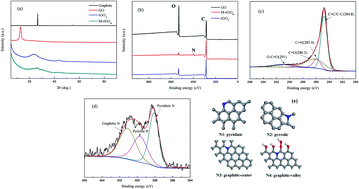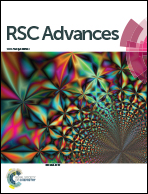Hierarchical porous nitrogen doped reduced graphene oxide prepared by surface decoration–thermal treatment method as high-activity oxygen reduction reaction catalyst and high-performance supercapacitor electrodes†
Abstract
Nitrogen doped (N-doped) porous reduced graphene oxide (rGO) is successfully obtained by a two-step method, which includes a surface finishing of graphene oxide (GO) followed by thermal treatment. Distinct from many other methods, such as heat treatment, chemical vapor deposition or plasma treatment, a special atmosphere (NH3) and special equipment is avoided using this method. The nitrogen atoms are introduced into the reduced graphene oxide by this method according to the X-ray photoelectron spectroscopy (XPS) results. Based on the high specific surface area, high porosity, and doped heteroatoms, the as-prepared N-doped reduced graphene oxide shows excellent electrocatalytic activity towards the oxygen reduction reaction (ORR) and high capacitance, compared with a pristine reduced graphene oxide sample. Therefore, this work demonstrates a good example of both electrocatalytic activity and capacitance properties of N-doped reduced graphene oxide prepared by the surface decoration of GO followed by heat treatment method, which opens the door for creating functional graphene materials with highly promising applications in high-performance renewable energy conversion and storage devices.


 Please wait while we load your content...
Please wait while we load your content...